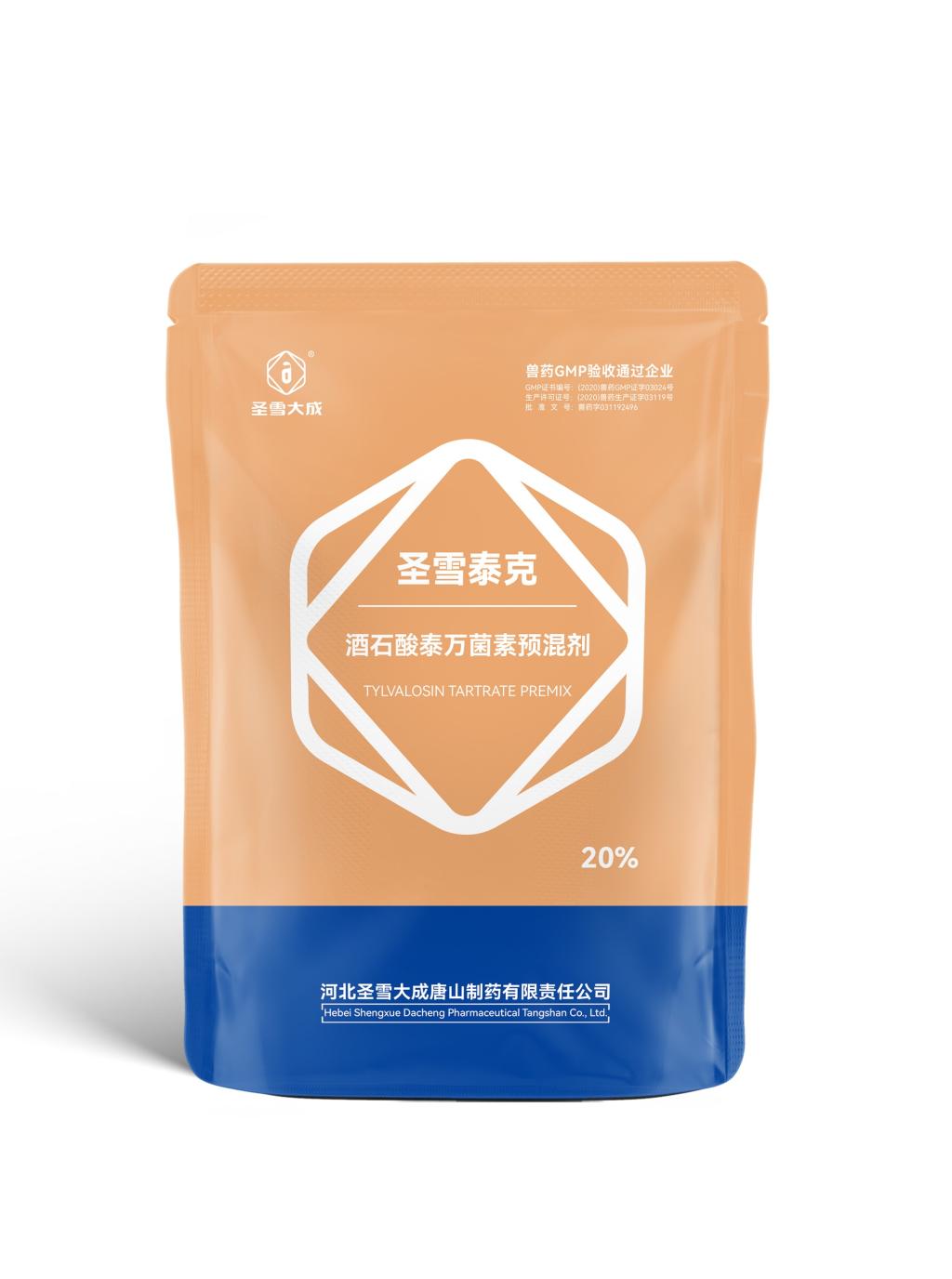Tel:+8618231198596

News
 CONTACT
CONTACT
 CONTACT
CONTACT
- Linkman:Linda Yao
- Tel: +8618231198596
- Email:linda.yao@dcpharma.cn
- Linkman:CHARLES.WANG
- Department:Overseas
- Tel: 0086 0311-85537378 0086 0311-85539701
News
Tylvalosin tartrate premix formulations are crucial in preventing disease transmission.
TIME:2024-09-13
Introduction
The livestock industry faces continuous challenges in managing infectious diseases that can rapidly spread within herds, affecting animal health and welfare, as well as economic outcomes. Tylvalosin tartrate, a macrolide antibiotic, has been widely recognized for its efficacy in controlling and preventing bacterial diseases in animals. When formulated as a premix, it can be precisely administered in feed or water, ensuring consistent dosing and effective coverage of the herd. This article explores the benefits of tylvalosin tartrate premixes in preventing disease transmission and discusses their role in sustainable livestock management.
Preventing Disease Transmission
Targeted Prophylaxis Tylvalosin tartrate premixes can be used as a prophylactic measure to prevent the onset of bacterial infections. By incorporating the antibiotic into the feed, it ensures that all animals receive the necessary dosage to maintain a protective level in their system. This is particularly useful during times of heightened risk, such as seasonal changes, weaning, or transport, when stress can compromise the immune system and make animals more susceptible to infections.
Control of Specific Pathogens Certain pathogens, like Lawsonia intracellularis and Clostridium perfringens, are known to cause significant economic losses in swine and poultry industries. Tylvalosin tartrate is effective against these and other bacteria, helping to control the spread of diseases like proliferative enteropathy (PE) and necrotic enteritis. The use of tylvalosin tartrate premixes can reduce the prevalence of these pathogens, thereby decreasing the likelihood of disease outbreaks.
Maintaining Herd Health
Improved Animal Welfare Healthy animals are less likely to suffer from the stress and discomfort associated with illness. By preventing disease transmission, tylvalosin tartrate supports the overall well-being of livestock, contributing to ethical farming practices and meeting consumer expectations for high welfare standards.
Enhanced Productivity Disease-free herds perform better in terms of growth rates, feed efficiency, and reproductive success. The use of tylvalosin tartrate premixes can result in improved productivity metrics, such as faster weight gain and higher egg production, which are essential for profitability in the livestock sector.
Supporting Sustainable Practices
Reduced Antibiotic Dependence By preventing disease before it occurs, tylvalosin tartrate reduces the need for therapeutic antibiotic use. This approach aligns with the principles of sustainable agriculture, which emphasize the judicious use of antibiotics to minimize the risk of developing antibiotic resistance.
Environmental Impact Mitigation Healthy livestock require fewer resources and generate less waste, leading to a smaller environmental footprint. Additionally, the controlled use of tylvalosin tartrate premixes can help reduce the potential for antibiotic residues in the environment, supporting broader efforts to protect ecosystems.
Challenges and Considerations
While tylvalosin tartrate premixes offer significant benefits in disease prevention, their use must be guided by best practices and regulatory frameworks. Key considerations include:
Monitoring and Surveillance: Regular monitoring of animal health and antibiotic resistance patterns is necessary to ensure the continued efficacy of tylvalosin tartrate and to adapt strategies accordingly.
Proper Dosage and Administration: Precise dosing is critical to avoid underdosing, which can lead to treatment failures, and overdosing, which can cause toxicity or promote resistance.
Compliance with Withdrawal Periods: Adhering to established withdrawal periods ensures that no antibiotic residues remain in meat, milk, or eggs intended for human consumption, safeguarding public health.
Conclusion
Tylvalosin tartrate premix formulations are indispensable tools in the prevention of disease transmission in livestock. Their ability to provide targeted prophylaxis, control specific pathogens, and maintain herd health makes them a cornerstone of sustainable livestock management. By supporting animal welfare, enhancing productivity, and mitigating environmental impacts, tylvalosin tartrate contributes to a resilient and sustainable agricultural sector. Responsible use, guided by science and regulatory oversight, will continue to be essential for harnessing the full potential of these formulations in disease prevention and control.
- Tel:+8618231198596
- Whatsapp:18231198596
- Chat With Skype







